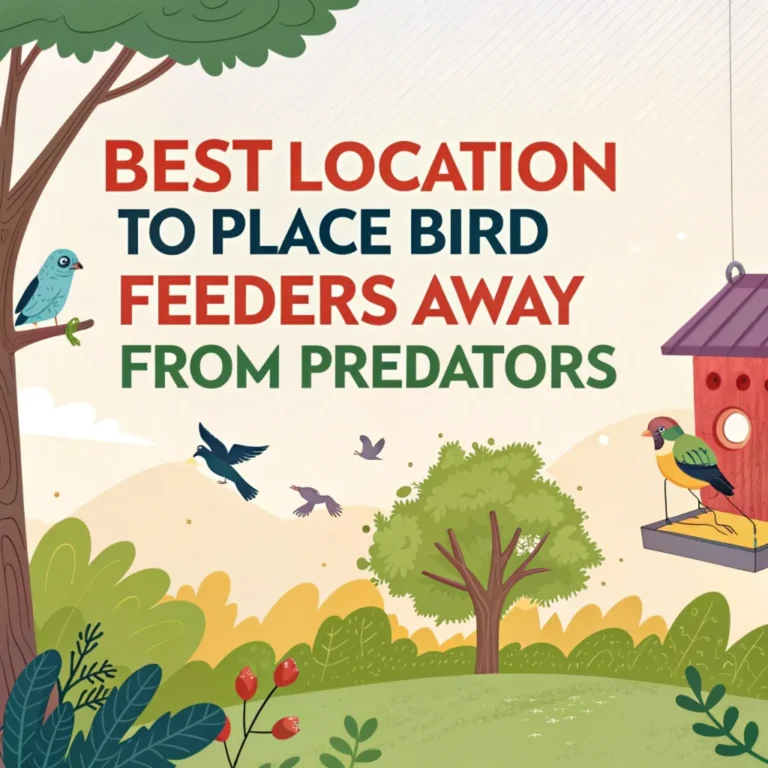North Carolina Backyard Birds: Familiar Flyers
In North Carolina, you can see many types of backyard birds. Common birds include the bright Northern Cardinal and the playful Carolina Chickadee. Watching these birds can teach you about their habits and how they adapt to living near people. You can learn about their feeding habits and how they establish their territory. Observing these birds makes your outdoor time enjoyable and helps you appreciate the balance of nature around you. What roles do these birds play in your local ecosystem?
Key Takeaways
- Northern Cardinals are common in North Carolina. The males are bright red, while the females are brown. You can often see them in backyards.
- Carolina Chickadees are small and friendly birds. They love sunflower seeds and frequently visit feeders, entertaining bird watchers with their playful nature.
- Blue Jays have striking blue feathers. They are social birds that engage actively at feeding stations, often interacting with other birds.
- Woodpeckers climb trees to find insects. They use unique feeding techniques and make distinct calls and drumming sounds.
- American Robins sing cheerful songs that announce the arrival of spring. They build nests in open areas using natural materials.
The Colorful Cardinals

The Northern Cardinal is a prominent bird in North Carolina. You can often see them at backyard feeders. Males have bright red feathers, while females display a warm brown color. Cardinals thrive in various environments, but your backyard often becomes their home.
During mating season, male cardinals show strong territorial behaviors. They assert their space by singing loudly and defending their area. Watching these interactions can deepen your connection to nature, creating a sense of belonging among birdwatchers.
These vibrant birds enhance your surroundings. They also reflect the spirit of resilience and community found in North Carolina's diverse wildlife. Enjoy observing their beauty and behaviors in your yard!
The Charming Chickadees
After enjoying the bright colors of cardinals, you may spot another delightful visitor in your yard: the Carolina Chickadee. These small, friendly birds often hop between branches and explore your feeder. You'll see their curious nature as they come close, bringing joy as they interact.
When feeding, chickadees often take sunflower seeds. They skillfully crack open the seeds to eat the nutritious part inside.
Chickadees are clever birds and often store food for later meals. This behavior shows their ability to adapt, making them lovely additions to your yard. As you watch these birds, you may feel a stronger connection to nature and a sense of belonging in your environment.
The Energetic Blue Jays

The energetic Blue Jay stands out with its vibrant blue feathers and unique crest. These intelligent birds often visit backyards, where they can easily be seen.
Blue Jays exhibit sophisticated social behaviors and problem-solving abilities. They dominate feeders and display a clear social structure among themselves.
Listen to their calls. A mix of harsh notes or beautiful whistles can indicate danger, while hawk imitations may cause other birds to flee.
Interacting with Blue Jays can enhance your understanding and appreciation of North Carolina's bird community. They're a lively part of the local ecosystem, adding richness to the world right outside your window.
The Acrobatic Woodpeckers
While exploring your backyard, you may see acrobatic woodpeckers. These birds have unique feeding techniques and colorful feathers. Woodpeckers show great skill as they cling to tree trunks. They search for insects hiding under the bark.
Their feeding methods include drumming, tapping, and pecking. They use their strong bills to find food.
- Woodpeckers adapt well to different environments.
- They create distinctive calls and drumming sounds.
- Their foraging attracts insects.
- They play a vital role in keeping forests healthy through their eating habits.
Enjoy watching these fascinating birds in action!
The Melodious Robins

As you enter your backyard, you may hear the cheerful songs of robins.
These birds sing bright tunes that signal the start of spring. Robins catch our attention with their beautiful calls and interesting nesting habits. They build their nests in open areas, using grass, mud, and twigs.
You can watch them as they create homes in bushes or tree branches to keep their young safe. Their lively colors and friendly behavior connect us to nature, encouraging us to enjoy the changing seasons.
These charming birds enhance our outdoor experiences and remind us of the joy of wildlife around us.
The Graceful Goldfinches
Goldfinches are small birds known for their bright yellow feathers and playful behavior. They often appear alongside robins, creating cheerful sounds in your backyard. Their presence adds joy to birdwatching.
Goldfinches prefer tube feeders and mesh bags filled with thistle and sunflower seeds. They create nests high in shrubs and trees during their breeding season, which typically occurs from late spring to summer.
Outside of this season, they're often seen in flocks.
The Curious Mourning Doves
Mourning doves are gentle birds known for their soft coos. You can often see them perched on fence posts and tree branches in backyards. These birds show calm and curious behavior as they approach bird feeders. They stop to check their surroundings before taking a chance.
Mourning doves prefer to build nests in thick vegetation. They use twigs and grasses to make simple nests. You may notice that they return to the same nesting location for multiple broods during the season. This ability to adapt allows them to thrive in various environments across North Carolina.
Frequently Asked Questions
What Bird Feed Is Best for Attracting Backyard Birds?
To attract backyard birds, choose a variety of seeds such as sunflower and millet. Place feeding stations in sheltered areas to encourage birds to visit. Creating a welcoming space will help you connect with these beautiful creatures. Enjoy watching them come to your backyard!
How Can I Create a Bird-Friendly Backyard?
To create a bird-friendly backyard, plant native plants that offer food and shelter for birds. Add water sources, such as birdbaths or small ponds, to attract a variety of species. These features will encourage birds to explore and nest in your yard.
What Are the Migration Patterns of North Carolina Birds?
Many birds in North Carolina migrate. They move from their winter homes to breeding areas in spring. This migration follows specific routes and patterns. They respond to changes in the environment. Observing these birds can help you feel connected to nature and its seasons.
When Is the Best Time to Observe Backyard Birds?
To observe backyard birds, spring mornings are busy as they nest. You will see many different species during this time. In winter, afternoons are quieter for birdwatching. However, you can still spot strong, resilient birds. Each season offers a chance to learn about their behavior and migration. Get outside and enjoy watching these fascinating creatures at different times of the year!
How Can I Identify Bird Calls and Songs?
To identify bird calls, listen carefully to their distinct patterns. Focus on the pitch and rhythm of each song. Practice recognizing calls every day. Over time, you will learn to distinguish between different species and enjoy a deeper connection to nature's sounds.

Ava is a bird enthusiast and nature lover who has spent countless hours observing and learning about the fascinating world of birds. With a passion for sharing her knowledge and inspiring others to appreciate the beauty of birds, Ava writes about her experiences and insights on avianadmirer.com.







